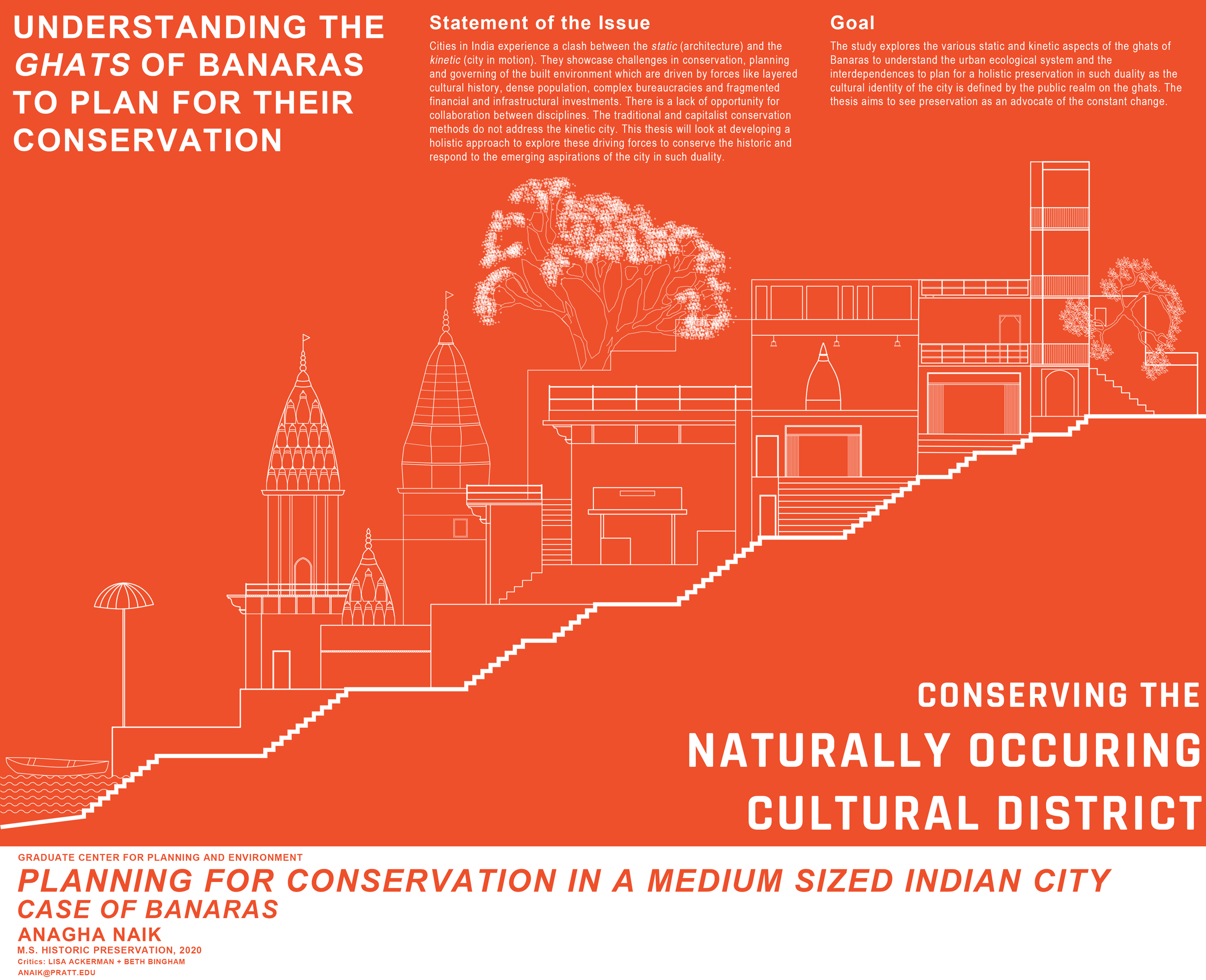HP Thesis: The Ghats of Banaras

Planning for Conservation in a Medium-sized Indian City: The Case of Banaras Anagha Naik, Pratt MSHP ‘20
Abstract
The focus of this thesis is the relationship between preservation, planning and urban placemaking and how these disciplines can be used effectively to preserve a historic city in India. The urban Indian landscape is defined by an intense duality – the static city which is the architecture built with permanent materials, and the kinetic city which is the ‘city in motion’, built with temporary materials like plastic, scrap metal and wood in response to the natural and human toll on built form. In many Indian cities, the static city is dominated by the kinetic city and the architecture is no longer the spectacle. It is therefore challenging to assess the cultural significance of a place where circumstances are so complex.
The clash between the static and the kinetic creates great obstacles to conservation, planning and governing of the built environment. In addition, there is a lack of collaboration across disciplines to address the issues. There exist contemporary engines to drive the process of conservation, but they are often in conflict with the kinetic city and its changing needs. This thesis proposes developing a holistic approach to utilize the driving forces to conserve the historic, while also responding to the emerging needs and aspirations of the city in motion.
I selected Banaras, a historic pilgrimage city on the banks of the holy Ganges, as a case study. The riverfront and the ghats (steps leading to the river) are the most enticing features where most ritual performances take place. The ghats hold up the public life of the city and are always in flux. The study explores the various static and kinetic aspects of the ghats of Banaras to understand the urban ecological system and the interdependencies to plan for a holistic preservation in such duality as the cultural identity of the city is defined by the public realm on the ghats. The thesis aims to see preservation as an advocate of constant change.